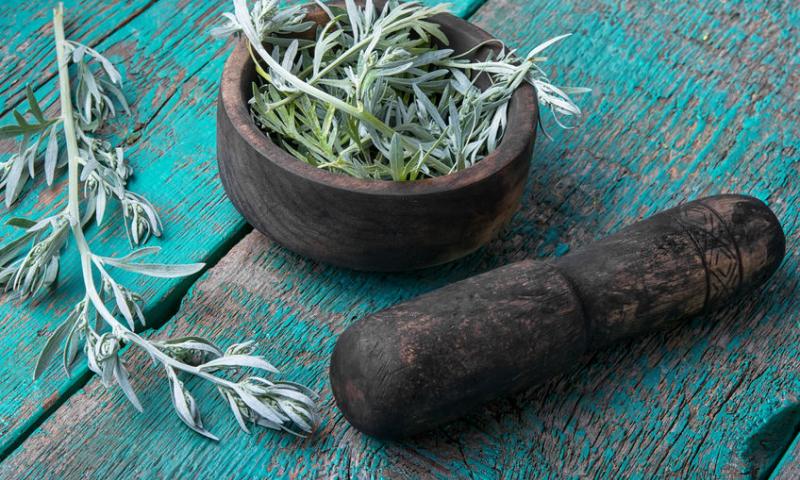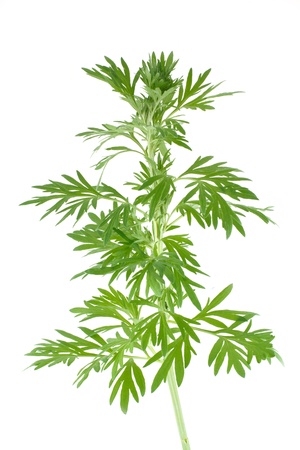 />
/>
Latin Name: Artemisia absinthium
Family: Asteraceae
Common Names: wormwood, absinthe, absinthium, absinthe wormwood, grand wormwood
Origin: wormwood is most likely native to the eastern Mediterranean area
Botanical information: wormwood is a perennial herb with fresh, strong smell. The stems are erect, high, furrowed, branched, greenish with silver, can reach up to 1.5 m high. The leaves are helix-shaped, green-grey on the top and white beneath, covered with smooth, white-silvery trichomes. The leaves are pinnate, dark green above and light below, of up to 25cm long. The flowers are yellow, small, tubular, collected in baskets with a diameter of up to 3 mm.
The smell of wormwood is now available to anyone who can afford to buy a bottle of wormwood essential oil. It is obtained from bitter herbs by distillation.
CHEMICAL COMPOSITION
Leaves and herb contain essential oil, bitter glycosides, absintine and anabsintin, phytoncides, tannins, resins, vitamins C and B6, carotene (provitamin A), succinic, acetic, malic acids, protein, starch.
Parts used: herb, leaves, flowers, root.
HISTORICAL FACTS ABOUT WORMWOOND
Since ancient times, wormwood has been applied.
Cleopatra used essential oil of wormwood in toilet water. The priestesses of Isis wore wreaths from wormwood.
Decoctions and infusions from wormwood were sprayed on plants to save them from flies. People also kept this herb at home to avoid moth.
In Rome, the winners of chariot races were given wine with wormwood as a prize for health promotion.
“Herbs are the friend of the physician and the pride of cooks”
Charlemagne
*This article is for informational purposes only. We suggest consulting with a physician before using these or any other herbal supplements.
